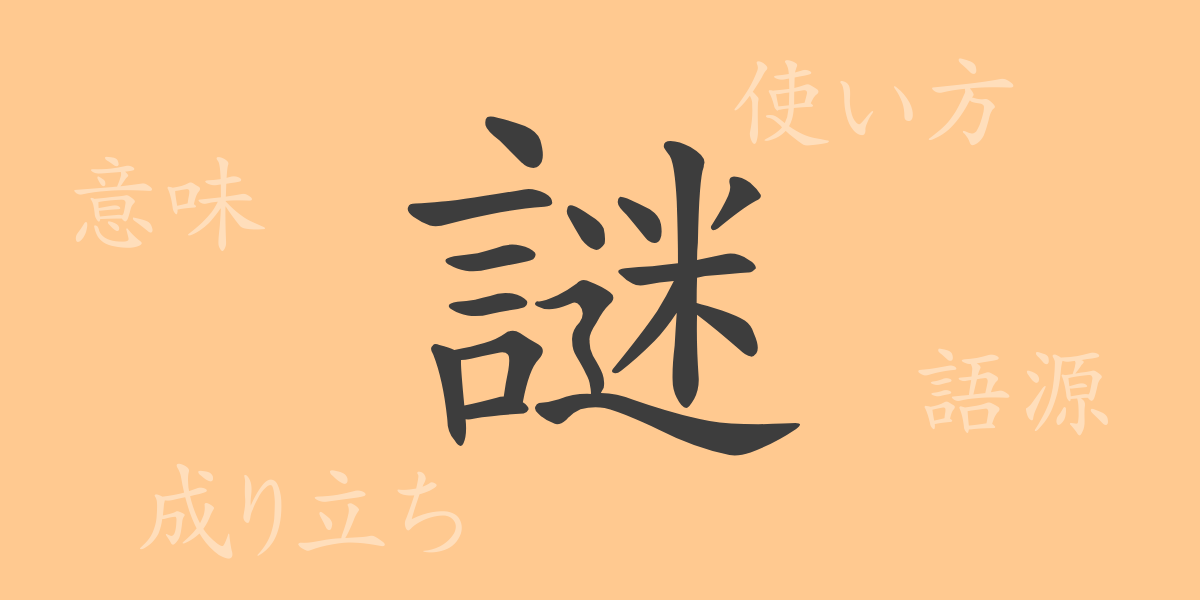Japanese culture and language are steeped in rich history and meaning, and the Kanji ‘謎 (なぞ)’ is no exception. Often used in daily life, it represents more than just a word but conveys deep historical and versatile meanings. This article delves into the origins, meanings, and uses of ‘謎’, exploring its presence in idioms and proverbs to deepen our understanding of its significance in the Japanese language.
Origins of ‘謎 (なぞ)’
The Kanji ‘謎’ has its origins in ancient Chinese script, initially depicting the act of threading something, represented by the ‘糸部’ (thread radical) combined with the sound ‘苗’. In Japan, during the Heian period, it came to be pronounced as ‘なぞ’, used to denote something with a hidden answer, evolving from its literal meaning of ‘something woven with threads’.
Meaning and Usage of ‘謎 (なぞ)’
‘謎’ refers to enigmatic problems or phenomena that are difficult to decipher. Commonly used in riddle games or mystery novels to describe unsolved cases, it also appears in everyday conversations, as in ‘His actions are a mystery.’ Additionally, it serves as a metaphor, used in phrases like ‘Her heart is shrouded in mystery’ to describe someone’s psychological state.
Reading, Stroke Count, and Radical of ‘謎 (なぞ)’
Basic information about the Kanji ‘謎’ is as follows:
- Readings: On’yomi ‘メイ’, Kun’yomi ‘なぞ’
- Stroke Count: ‘謎’ consists of 17 strokes.
- Radical: The radical for ‘謎’ is 言 (ことばへん), relating to speech or words.
Idioms, Phrases, and Proverbs Using ‘謎 (なぞ)’
There are many idioms and proverbs that include ‘謎’, each enriching the Japanese language with expressive versatility:
- 謎々 (なぞなぞ): A type of wordplay popular among children, where participants guess the hidden meanings.
- 謎解き (なぞとき): The act of solving mysteries or puzzles, commonly used in detective stories.
- 謎言 (なぞごと): Refers to speech that is difficult to understand or mysterious statements.
These expressions showcase the playful and profound aspects of the Japanese language, enhancing it through the use of ‘謎’.
Conclusion on ‘謎 (なぞ)’
This article has provided an in-depth look at the Kanji ‘謎’, from its historical roots to its modern applications, and its characteristics as a Kanji. Exploring its origins to contemporary usage and the nature of the character itself, we recognize the significance and beauty of each character in the Japanese language. The next time you encounter something ‘mysterious’, remember the history and meaning behind it, and appreciate the depth of the language even more.

























